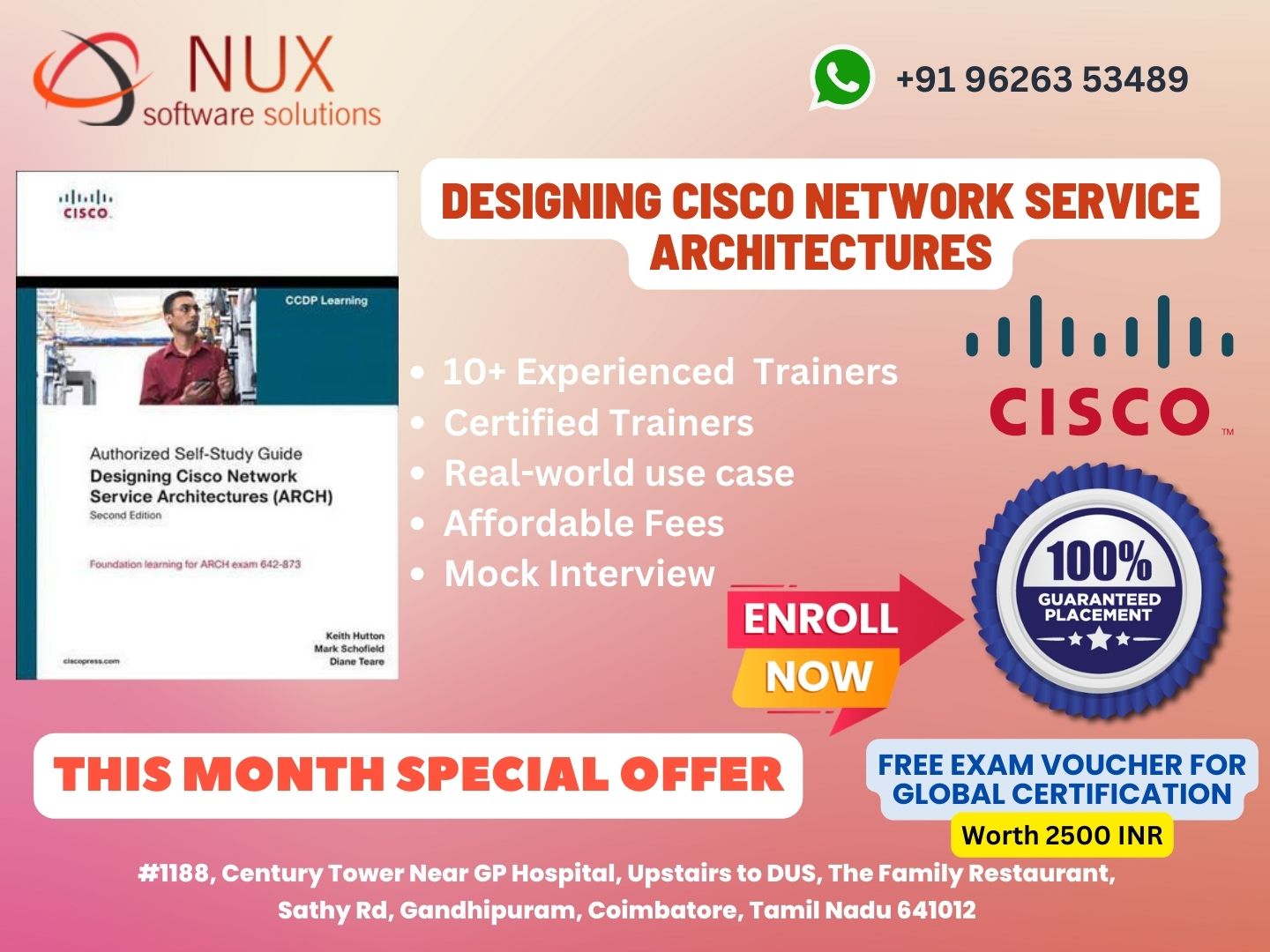Designing Cisco Network Service Architectures (ARCH) – 300-320

Designing Cisco Network Service Architectures (ARCH 300-320) Training in Coimbatore
Course Overview
The Designing Cisco Network Service Architectures (ARCH 300-320) course is a professional-level training program that focuses on the design of complex, scalable, and secure enterprise network infrastructures. As a part of the former CCDP (Cisco Certified Design Professional) certification track, this course empowers learners with the skills needed to create sophisticated end-to-end network designs that align with modern business and technical requirements.
At Linux Training Center in Coimbatore, we provide expert-led, hands-on training in network design principles, helping you confidently architect Cisco-based enterprise networks across WAN, LAN, data centers, and cloud environments.
Why Choose ARCH 300-320?
As networks become more complex and mission-critical, designing the right architecture is crucial. This course goes beyond basic routing and switching, diving into advanced topics like high availability, modular design, network services integration, and virtualization support.
Whether you’re working on campus designs, WAN connectivity, or integrating security and mobility, the ARCH course ensures you can make design decisions that improve performance, reliability, and scalability.
Who Should Enroll?
This course is ideal for:
-
Network Designers and Architects
-
Cisco Certified Professionals (CCNA/CCNP level)
-
Enterprise Infrastructure Consultants
-
IT Managers and Network Engineers
-
Professionals preparing for advanced design roles or transitioning to infrastructure architecture roles
Familiarity with Cisco networking technologies and completion of CCDA-level concepts are recommended.
What You Will Learn
-
Principles of modular network design using Cisco’s hierarchical model
-
Enterprise campus and branch office network design strategies
-
WAN architecture and routing protocol selection for scalability
-
High availability and failover mechanisms in network design
-
Integration of security services like firewalls, VPNs, and access control
-
Virtualization technologies and their role in enterprise design
-
Collaboration and data center network design considerations
-
QoS (Quality of Service) design and traffic management
-
Design documentation, validation, and implementation planning
The course also provides guidance on how to balance technical solutions with business goals to create cost-effective, secure, and scalable network architectures.
Course Highlights
-
Led by Cisco-certified network design experts
-
Real-world design case studies and architecture planning tasks
-
Complete coverage of ARCH 300-320 exam objectives
-
Flexible online/offline training with interactive sessions
-
Exam readiness support and architecture documentation templates
-
Career-focused guidance for infrastructure architects and consultants
Career Opportunities
After completing the ARCH training, learners can move into roles such as Enterprise Network Architect, Solution Design Engineer, Network Infrastructure Consultant, or IT Strategy Specialist. This course also strengthens your path toward senior design certifications or enterprise architecture roles.
Why Linux Training Center?
Linux Training Center in Coimbatore is known for transforming network engineers into enterprise architects. Our ARCH 300-320 training is tailored for practical application, using Cisco tools and real-world network design simulations to prepare you for both certification and long-term career success.



